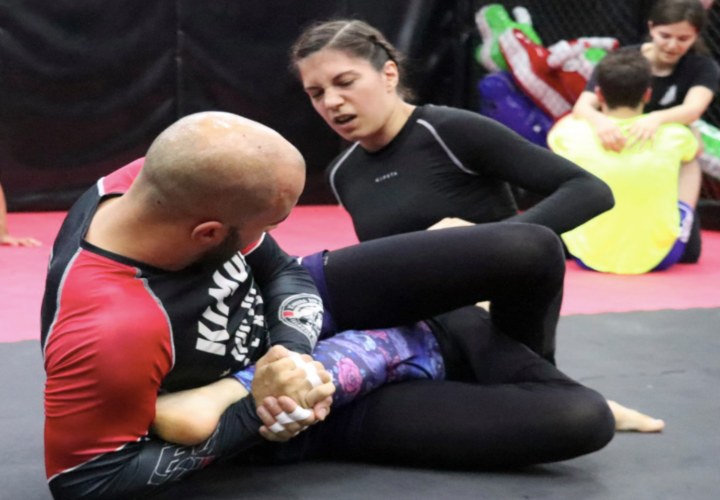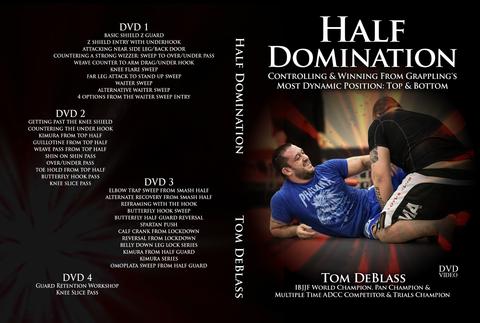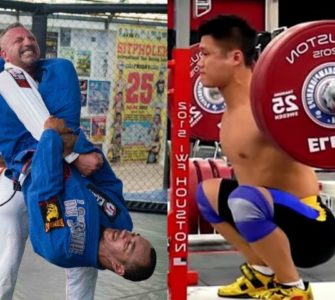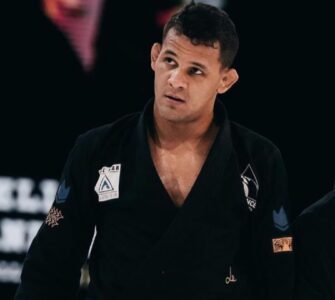Going too hard during BJJ practice is like pushing a rubber band to the point of snapping. Often times while rolling, tapping out isn’t an option because our egos are dominating our minds. Only after the injury has occurred will we realize what we could have done to avoid getting hurt. Being conscious of our own safety, and the safety of our peers is very important in avoiding injury. Here are the five most common injuries and how to roll with them:
Lower Back:
Anytime your back flexes deeply in the wrong direction it automatically affects your spine. It’s important to assess this type of injury right away, to ascertain whether it is a strained muscle or a much more serious disc injury. Muscle injuries usually occur through pulling or lifting in uncomfortable positions that could lead to back strain. The pain can actually be felt a couple of hours after the injury occurs. A herniated disc, however, is much more immediate and usually occurs with the pain trickling down your lower back to your leg. Muscle injuries are usually treated by icing and delicately stretching, but a herniation is much more serious and needs immediate medical attention. MRIs or CT-scans are usually ordered up in order to diagnose a herniated disc. If you do have a lower back injury, learning how to roll is fundamental. For a strained muscle, you should avoid positions that compromise the spine, and stay away from moves that involve close guards, mount, and bridging (you can do open guard).
2. Neck:
Sticking your neck out in awkward positions is pretty standard in BJJ. But if you are not in the most obvious powerful neck submissions, such as the Guillotine or a Mata Leão, you may not realize the position your partner is holding you in is damaging your neck. You may think, “it’s just my neck bending,” however 2-3 months of proper healing could be necessary, which will throw you even further off your game.
So here are some tips for how to roll with a neck injury: First off, make your partner aware of the fact you have an injured neck, and take it easy. Second, don’t be in any positions where you can’t control your opponent grabbing your head. Third, certainly don’t use your head as a base point.
3. Knees:
Although in BJJ we adore our leg locks, if performed improperly by just pushing the body a little bit further in the wrong direction, a knee injury can occur. It’s important to feel if the ligament is torn partially or entirely. While a bruise from a high impact hit on the mat is fixable, any more serious pain needs to be examined by a doctor. It’s key to remember that nothing hurts before it’s too late, so if any discomfort is felt during rolling, you should tap out.
How to roll with a knee injury: Coming back early from a knee injury, you can bind your knees together with your belt, and focus on just hand defense. You’re not passing any guards, or mounting, but your defense becomes very strong.
4. Shoulders:
The most common injuries of the shoulders occur from stubborn arm attacks, twists from rolling, or prolonged active posting. As Rener Gracie puts it when he offers this riff on The Godfather, “Keep your friends close, your enemies closer, and your elbows closest.” A minor injury such as a muscle strain, should be iced and treated with plenty of rest. If the injury happens to be a severe dislocation, you should definitely consult a doctor before returning to the mats.
How to roll with a shoulder injury: Tying one hand up with your belt and rolling is hard, but so extremely good for you in BJJ.
5. Ears
So-called “cauliflower ears” are a trademark of martial arts, in particular of grappling. Cauliflower ears occur when your ear’s cartilage bends and breaks. Internally, your ear tissue will bleed, and externally it will swell up. The body tries to heal and forms lots of scars, creating the “cauliflower” effect, of pieces of cartilage piled one on top of the other. The recommended treatment for this “injury” is to drain the fluid with a syringe. Of course, the procedure needs to be carried out by a medical professional. Icing the area (for short periods of time only), and taking anti inflammatory medication are also recommended.
One way to avoid “cauliflower ears” is to wear not very fashionable headgear, or just being mindful of not constantly smashing your head on your opponent or on the mat while you grapple. Also, when feeling direct pain on the ear after rolling, immediately apply ice, and try not to roll for the next few days.
If you are injured and want to return to the mat, a safe game to play is half guard. It keeps you safe and doesn’t put pressure on the knees. To get easy to follow and extremely applicable half guard game changing techniques, you will want to check out Tom DeBlass‘ 4 volume, best-selling Half Domination series today. This series has been so popular that we wouldn’t be suprised if a Half Domination Part Two gets made in the very near future!




















